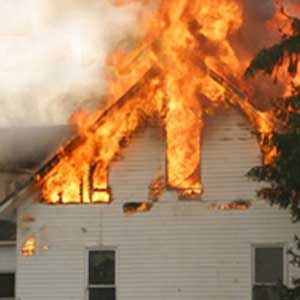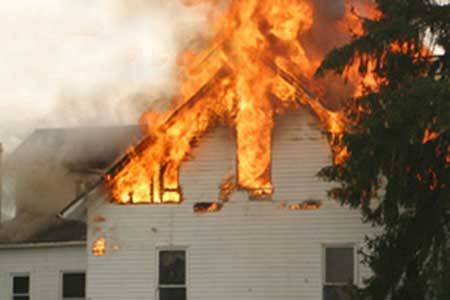
Losing all or part of a home to fire is a distressingly common calamity in this country. But when the insurance payout is inadequate—or nonexistent—trauma can spiral into tragedy. According to Jeanne Salvatore of the Insurance Information Institute, the best protection is guaranteed-replacement-cost insurance, which will pay for rebuilding and refurnishing a house, regardless of depreciation. A claimant with this coverage can replace a ruined 15-year-old sofa with a brand new equivalent. (Sorry, you can’t get leather if the original was velour.) If the sofa were covered by an actual-cash-value policy, the insurer would subtract depreciation from the replacement cost.
Still, even the best coverage won’t help without a complete account of losses. Dick and Sandra Silva got lucky—in a bureau drawer after their fire they found a damp but playable videotape in which Dick conducted a tour of the house for an out-of-town friend. “That video has been a huge help,” says Dick. “Once we rebuild, I’ll make one just for insurance purposes. I’ll store copies in my safety deposit box, and encourage my relatives to do the same.”
“A taped document of the contents of your home is a great idea,” agrees Salvatore. “Walk through the whole house, describing what you see. Be sure to open drawers and narrate what’s there onto the tape: ‘This is a black Armani suit, here are 20 white T-shirts from the Gap,’ that kind of thing.” Photographs will also work. These can be supplemented by completing a home-contents inventory form, available from the Insurance Information Institute.Home owners displaced by fire can also recoup normal living expenses. Most policies cover food and housing costs, telephone and utility installation in a temporary residence, extra transportation costs to work or school, and relocation and storage expenses for furniture. Insurance companies will usually advance the money for such expenses, but be sure to keep receipts to support your claims.
A claims adjuster determines just how much money a policy will pay out. Most insurers provide adjusters for no charge, but they have little incentive to be generous. That’s why many claimants, including the Silvas, hire a public adjuster, who gets a percentage of the claim. But beware the fire-truck chaser who knocks on your door before the smoke clears. A call to the state insurance department can confirm whether an adjuster is licensed or under investigation. And, Salvatore says, “Never give any adjuster cash up front.”
Sentries and Common Sense
Smoke detectors reduce the chance of death in a residential fire by as much as 50 percent—as long as they’re working. Batteries must be replaced annually, or when the alarm “chirps”; detectors themselves should be replaced after 10 years. Most states mandate these devices on every level of the house, including the basement, placed either on the ceiling or on a wall within 8 inches of the ceiling.
Dick Silva’s house had five detectors, but no one was home to hear them. Monitored smoke detectors solve that problem; when an alarm is triggered, a round-the-clock monitoring service calls the fire department. In many states, such as Florida and California, municipalities mandate residential sprinkler systems. Installation can be pricey, but lowered insurance premiums can help defray the cost.
Beyond that, keeping a home fire-safe is largely a matter of common sense. Plan and rehearse house evacuation. Mount fire extinguishers in kitchens, check their pressure monthly, and make sure all adults in the house know how to use them. Indoors, keep anything combustible away from the furnace and stove, and have a chimney sweep inspect all flues at least once a year. Outside, trim back any tree branches within 10 feet of the chimney, and any brush within 100 feet of the house. Finally, always put gasoline in safety cans with flame arresters and pressure-relief valves, and store the cans outside the house.

